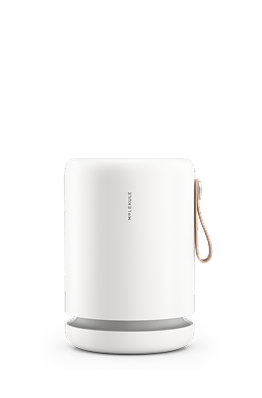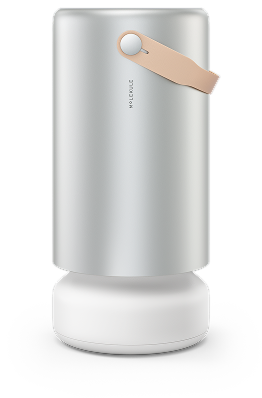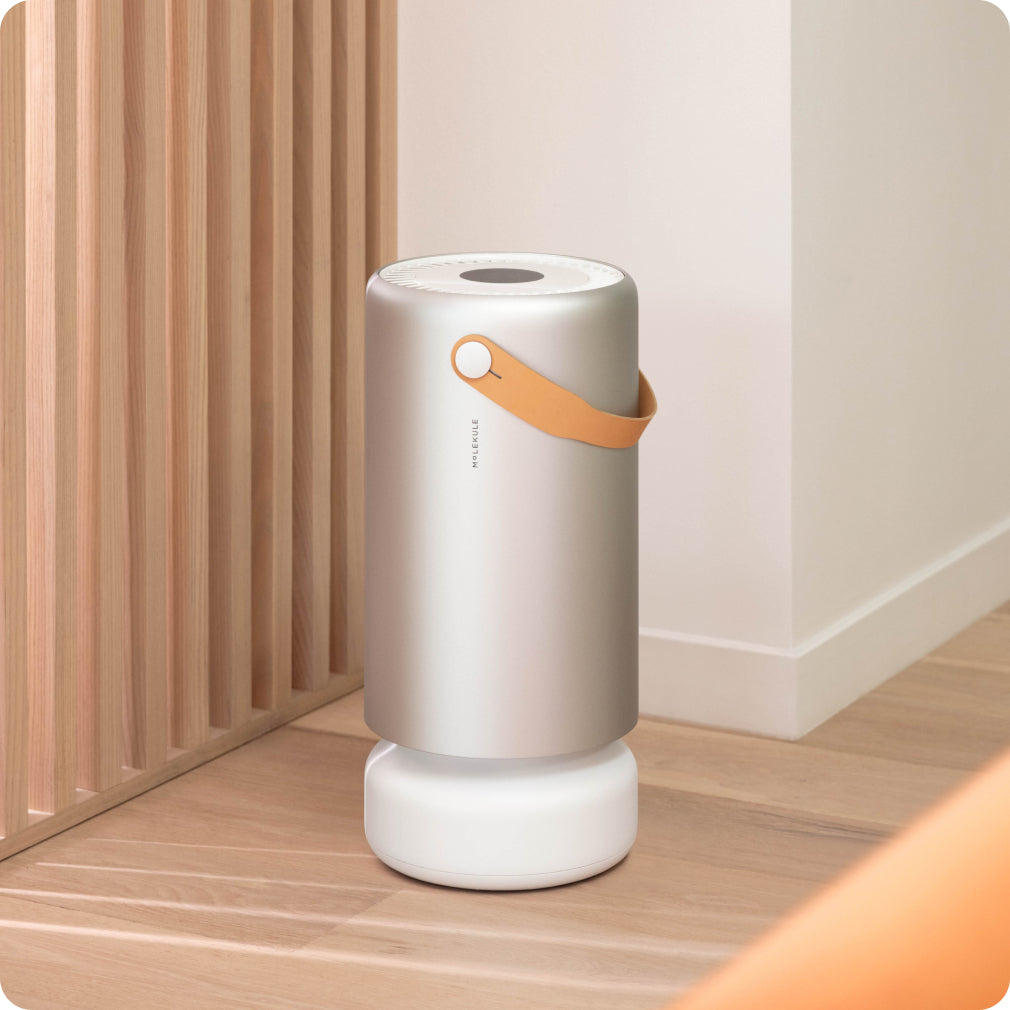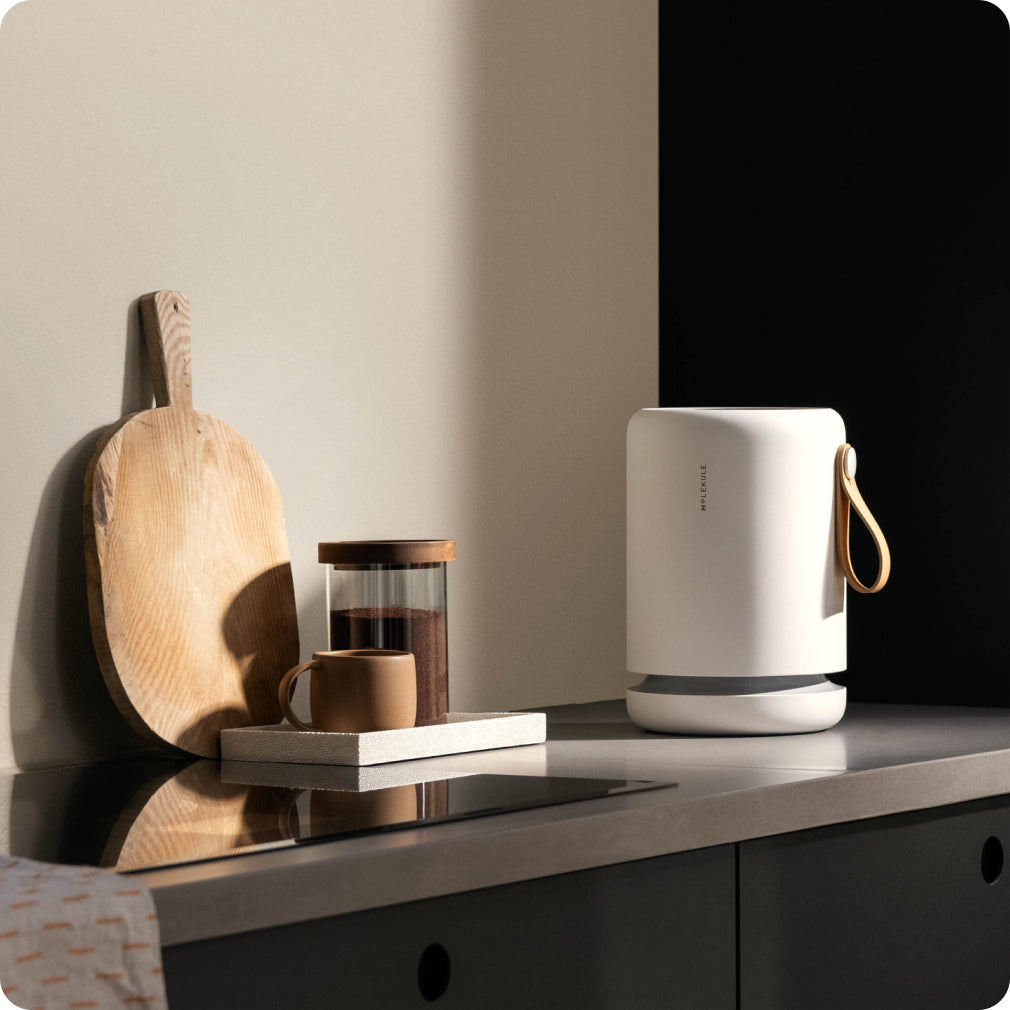If you’ve spotted dark patches on walls, smelled something musty, or battled constant allergies indoors, mold might be the cause. Mold comes in many forms, from common allergens like Aspergillus and Cladosporium to toxic species like Stachybotrys chartarum (black mold). Knowing which type you’re dealing with helps you choose the right cleanup approach.
While small mold problems can often be handled at home, it’s just as important to keep the air clean. Mold releases tiny spores and compounds that float through the air, which means effective cleanup should include air purification. Systems that destroy spores at the molecular level help prevent mold from returning and keep the air healthier to breathe.
Key Takeaways
-
Three Mold Categories: Allergenic (causes mild reactions), pathogenic (can infect healthy people), and toxigenic (produces toxins, requires professional removal)
-
Common Household Types: Aspergillus, Cladosporium, Penicillium, Alternaria, and Stachybotrys chartarum
-
Identification Signs: Musty odor, visible spots, or discoloration on damp materials
-
Removal Basics: Fix leaks and moisture sources first; small areas under 10 sq ft can be cleaned safely; large infestations require professionals
-
Prevention: Keep humidity between 30–50%, fix leaks fast, and use continuous air purification
Understanding Mold in Homes
Mold is a type of fungus that reproduces through microscopic spores carried by air. Indoors, it grows when those spores land on damp surfaces such as drywall, wood, or insulation. According to the EPA, all indoor mold growth should be removed because even non-toxic molds can damage property and worsen allergies.
Professionals classify mold into three categories:
|
Category |
Health Risk |
Recommended Action |
|
Allergenic |
Causes mild allergic reactions |
Safe for DIY cleaning with protection |
|
Pathogenic |
Can cause infections, especially in vulnerable people |
Often needs professional removal |
|
Toxigenic |
Produces harmful mycotoxins |
Always requires professional remediation |
Common Types of Household Mold
1. Aspergillus
A common indoor mold that appears in green, white, yellow, or black shades. It grows on walls, insulation, food, and inside HVAC systems. While most species cause only allergies, some produce toxins that can harm the liver and lungs.
-
Category: Allergenic/Toxigenic
-
Found: In air ducts, damp walls, and food storage areas.
-
Solution: Fix leaks and clean mold with antimicrobial solutions; use air purification to capture spores in circulation.
2. Cladosporium
Usually dark green or black with a pepper-like appearance, this mold thrives on bathroom walls, painted surfaces, and fiberglass ducts. It can grow in both warm and cool temperatures and spreads easily through air movement.
-
Category: Allergenic
-
Health impact: Triggers red eyes, itchy skin, and sore throat in sensitive people.
-
Prevention: Improve ventilation and clean affected areas promptly.
3. Stachybotrys Chartarum
Known as black mold, this slimy greenish-black mold produces potent toxins and grows on wet cellulose materials like drywall, paper, and wood. It requires constant moisture for at least a week to take hold.
-
Category: Toxigenic
-
Health impact: Can cause respiratory distress, headaches, and fatigue.
-
Action: Always call a professional; cleaning black mold yourself can release spores and make exposure worse.
4. Penicillium
Recognizable by its blue or green color and velvety texture. It grows behind wallpaper, in insulation, and on water-damaged materials.
-
Category: Allergenic/Pathogenic
-
Health impact: Can trigger asthma and sinus infections.
-
Tip: Clean small areas carefully and replace contaminated materials to prevent spread.
5. Alternaria
Dark green or brown with a fuzzy texture, this mold often appears in showers, under sinks, or near windows. It spreads quickly in humid environments and can aggravate asthma.
-
Category: Allergenic
-
Prevention: Keep bathrooms and kitchens dry, fix leaks fast, and improve ventilation.
6. Aureobasidium
Starts pink or white, then turns brown or black. It grows behind wallpaper and on caulking and wood.
-
Category: Allergenic
-
Health impact: Can cause skin, eye, or nail irritation.
-
Prevention: Clean regularly and monitor humidity in older homes.
7. Chaetomium
White and cotton-like at first, turning gray or brown over time. It emits a strong musty smell and grows on water-damaged drywall and wood.
-
Category: Pathogenic
-
Risk: Can damage materials and affect the nervous system.
-
Action: Requires professional remediation.
8. Fusarium
Pink, white, or red mold that grows in damp, cool areas like basements and carpets. It spreads quickly and can cause infections in those with weakened immune systems.
-
Category: Pathogenic/Toxigenic
-
Action: Professional removal is recommended.
9. Mucor
These thick white or gray patches are often found around HVAC systems and damp carpeting.
-
Category: Allergenic/Pathogenic
-
Health risk: May cause breathing problems and, in rare cases, fungal infections.
-
Prevention: Clean HVAC filters regularly and maintain low humidity.
10. Trichoderma
Starts white or yellow, turning dark as it matures. Found on wet wood, drywall, and fabrics. It can cause allergic reactions and damage wood structures.
-
Category: Pathogenic
-
Prevention: Fix leaks quickly and replace moldy materials.
11. Ulocladium
Dark gray or black mold that only grows in very wet areas, such as after flooding.
-
Category: Allergenic
-
Indicator: Its presence signals major moisture issues and often accompanies other harmful molds.
12. Serpula Lacrymans
This is a yellow-brown mold, also called dry rot, that damages wood by producing its own moisture as it spreads.
-
Category: Pathogenic
-
Impact: Can compromise a building’s structure.
-
Action: Requires professional remediation.
Identifying Mold in Your Home
Watch for:
-
Musty or earthy odors
-
Discoloration or stains on walls, ceilings, or carpets
-
Bubbled paint or warped flooring
If you suspect hidden mold, follow the smell to its strongest point and inspect nearby damp areas. Professional inspectors can test samples to confirm the species and determine how far it has spread.

Safe Mold Removal
Small areas (under 10 square feet) can be cleaned with detergent, water, and protective gear like gloves, goggles, and an N95 mask. Always fix leaks before cleaning, seal off the area with plastic sheeting, and dry the surface completely afterward.
For larger infestations or toxic molds like black mold, hire professionals. They have the tools and containment systems to remove mold safely without spreading spores.
Why Regular Air Purifiers Aren’t Enough
Standard HEPA filters only trap mold spores, they don’t destroy them. Spores can remain alive on filters and may be released during maintenance. Traditional purifiers also can’t capture gaseous odor compounds (mVOCs) that create that musty smell.
Molekule’s PECO technology goes further by destroying spores and odor-causing molecules at the molecular level. This helps prevent recolonization and provides cleaner, healthier air throughout your home.
Molekule Air Purifiers for Mold Prevention
The Molekule Air Pro covers up to 1,000 square feet and destroys mold spores, allergens, and odors. Ideal for large areas or open spaces.
The Molekule Air Mini+ is compact for rooms up to 250 square feet, such as bathrooms, basements, or bedrooms.
Both models are FDA-cleared and designed to keep the air clean during and after mold remediation.
Preventing Mold in the Long Term
Keep these tips in mind when trying to keep your home mold-free:
-
Keep humidity between 30–50% with a dehumidifier or air conditioner.
-
Use exhaust fans in kitchens, bathrooms, and laundry rooms.
-
Fix leaks and water damage within 24–48 hours.
-
Clean HVAC systems and replace filters regularly.
-
Run an air purifier for mold continuously in moisture-prone areas.
The Bottom Line
Many types of mold can grow indoors, but they all thrive in damp, poorly ventilated spaces. By controlling moisture, cleaning affected areas, and using air purification systems that destroy spores, you can stop mold from spreading and keep your home’s air clean and safe.
Frequently Asked Questions
What's the difference between mold and mildew?
Mildew is a specific type of surface mold that appears white or gray, easily removed with scrubbing and commercial cleaners. True mold penetrates porous materials, requiring more extensive removal, including material disposal and moisture source correction.
Can I remove black mold myself safely?
Never attempt Stachybotrys chartarum removal without professional help since disturbing toxic black mold releases massive amounts of dangerous mycotoxins and spores, causing severe health complications. Professional services contain spores, remove mold with minimal disturbance, and verify complete elimination.
How quickly does mold grow after water damage?
Mold can begin growing within 24-48 hours after materials become wet, with visible colonies developing within several days. Stachybotrys requires sustained moisture for at least one week before establishing growth, making immediate drying critical for prevention.
Do air purifiers help with mold problems?
Home air purifiers remove airborne mold spores but cannot eliminate surface growth, requiring physical removal. Advanced molecular destruction technology like Molekule's PECO system destroys spores permanently, preventing recontamination during and after remediation compared to traditional HEPA filters that only trap spores temporarily.
What humidity level prevents mold growth?
Maintaining humidity between 30-50% prevents mold reproduction while avoiding excessively dry air, causing respiratory irritation. Use dehumidifiers in damp areas and monitor levels with hygrometers for optimal mold prevention.
When should I call professionals for mold removal?
Contact professional mold remediation for areas larger than 10 square feet, any toxic mold like Stachybotrys, hidden mold in HVAC systems or walls, mold from sewage contamination, or when health concerns require specialized expertise and containment protocols.






